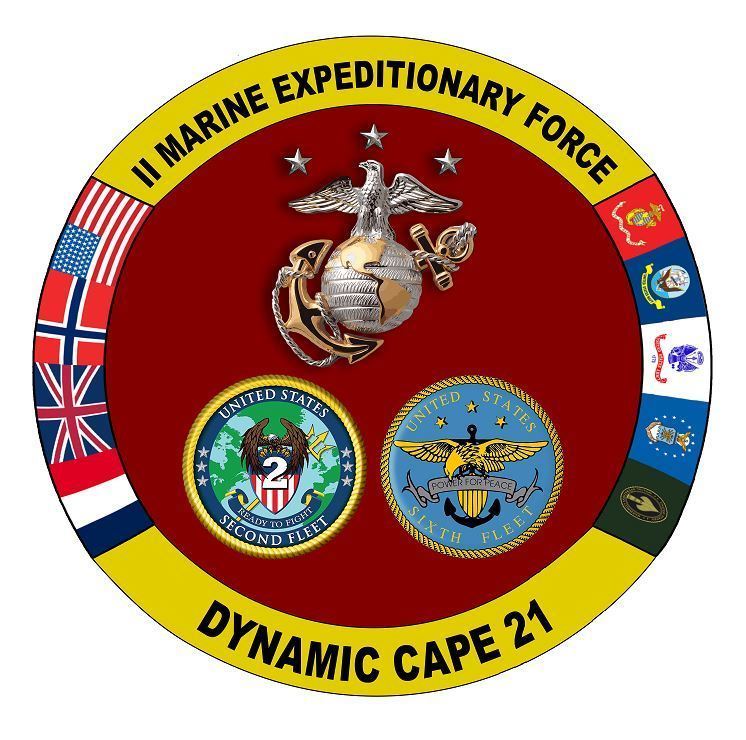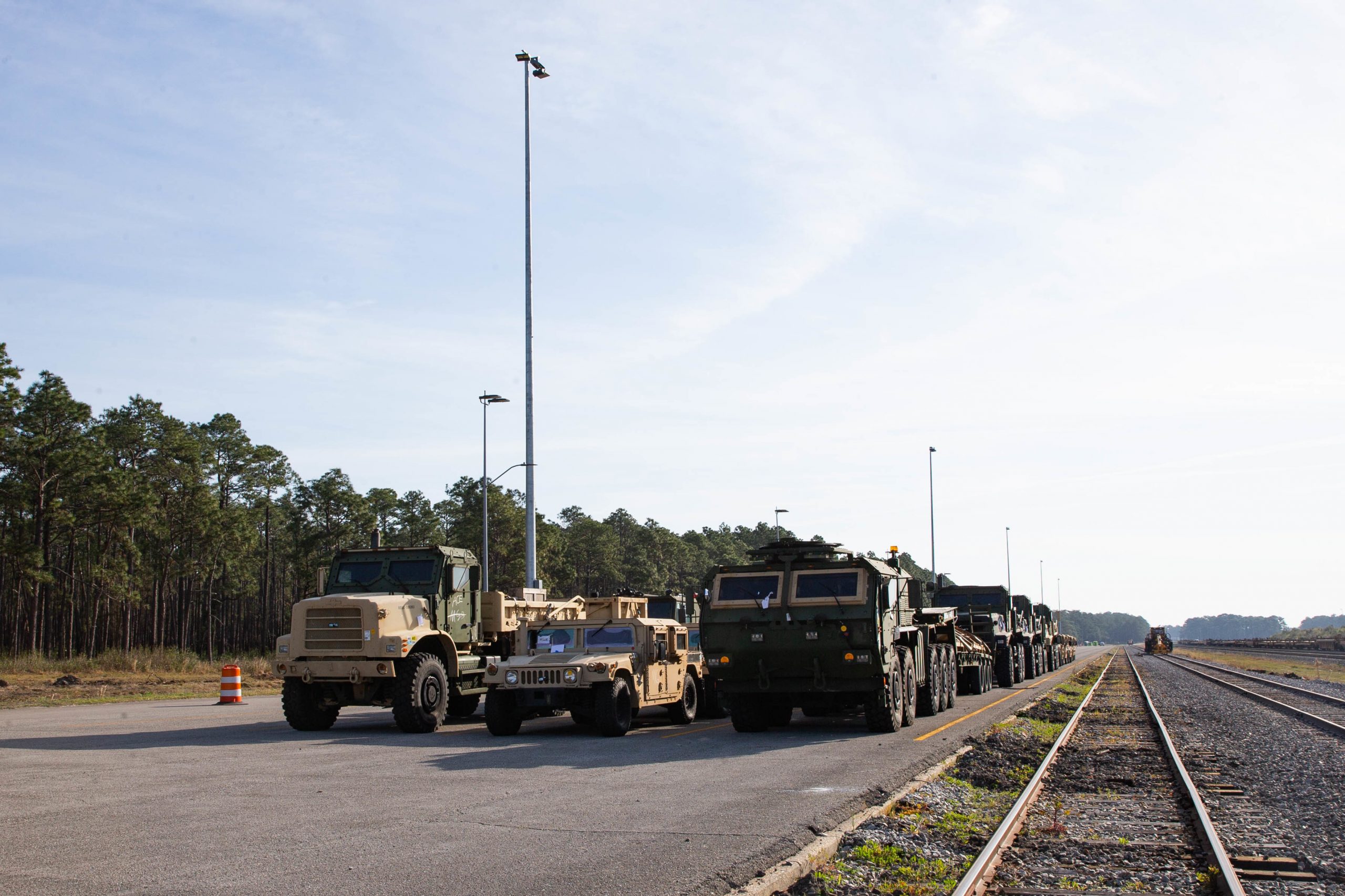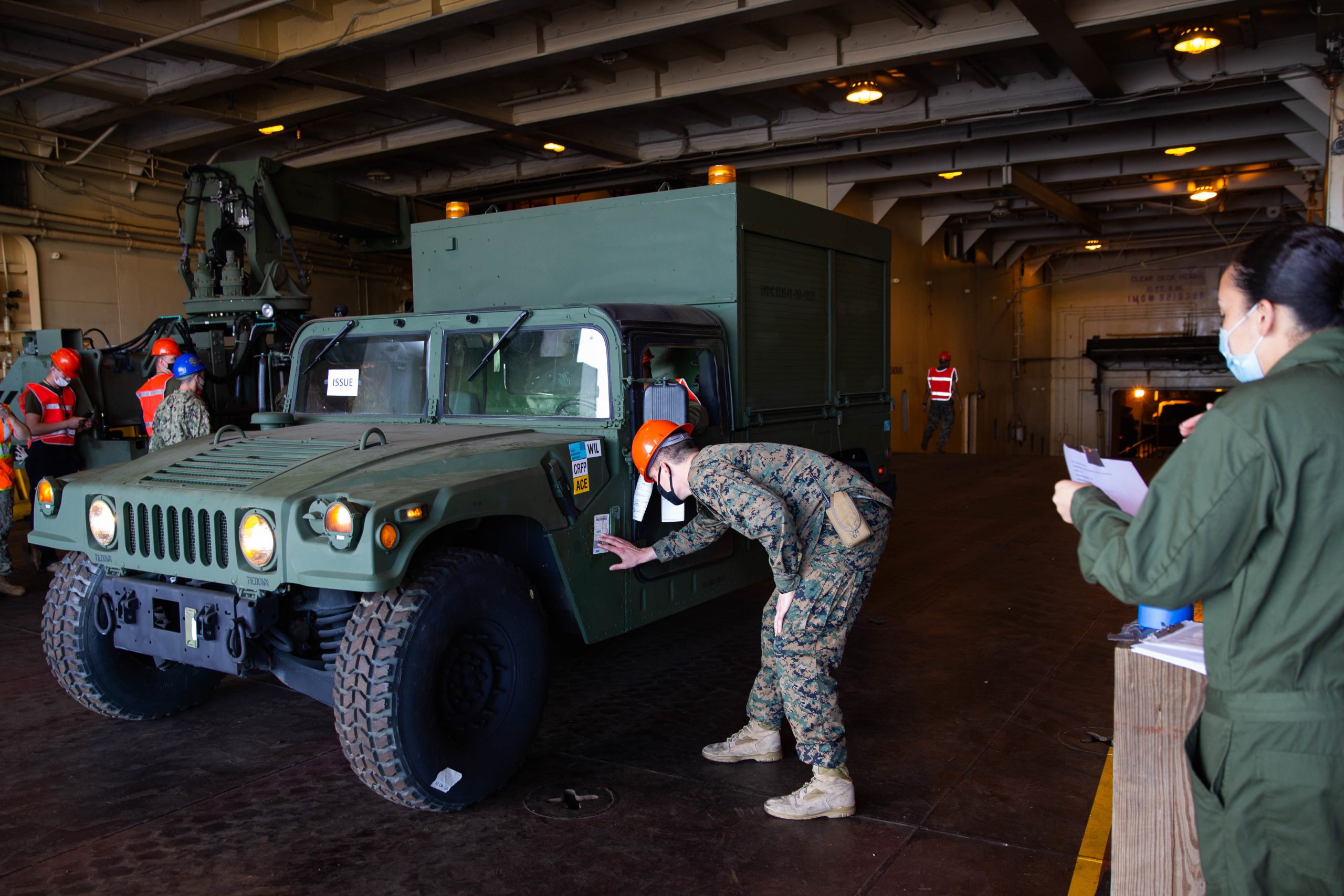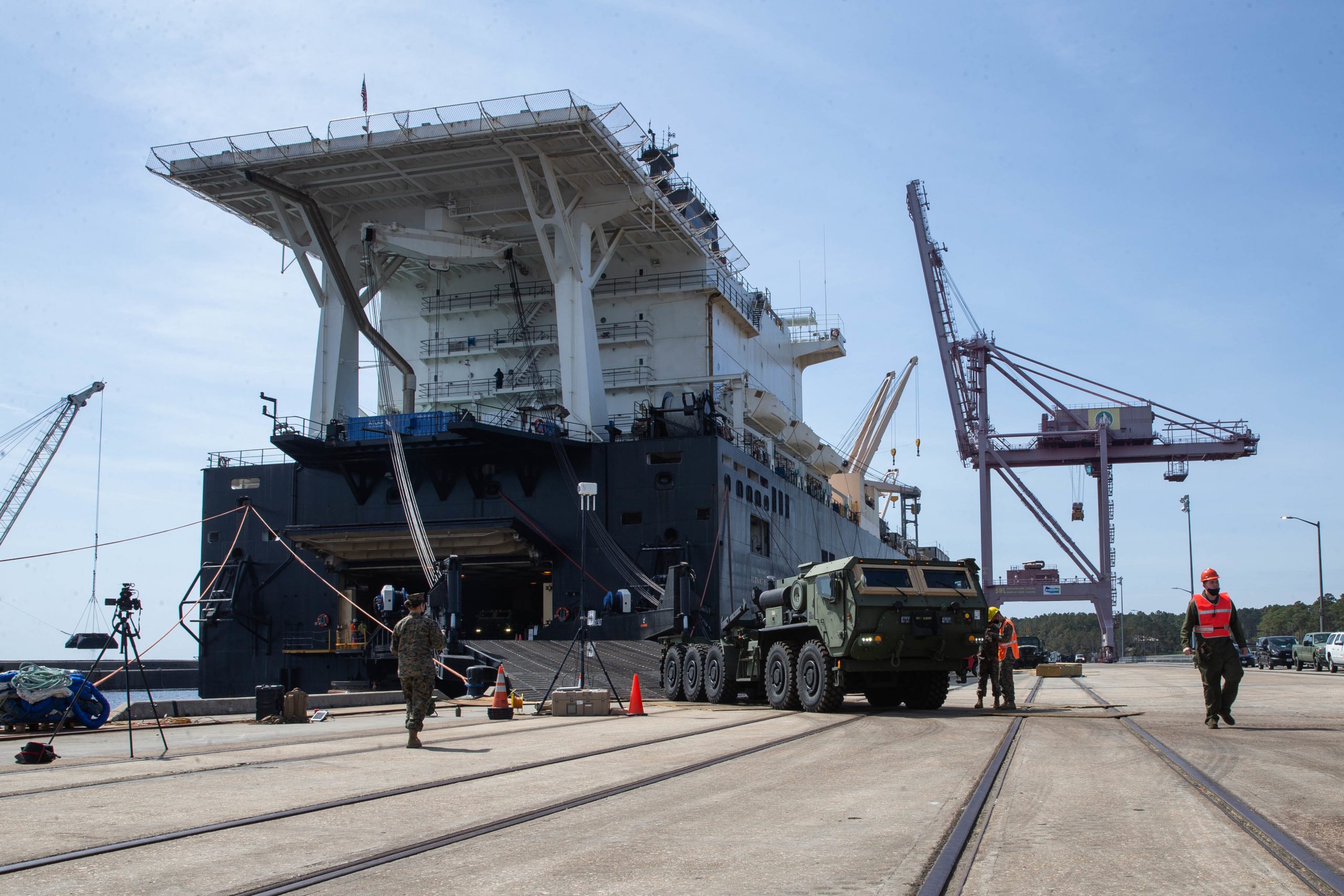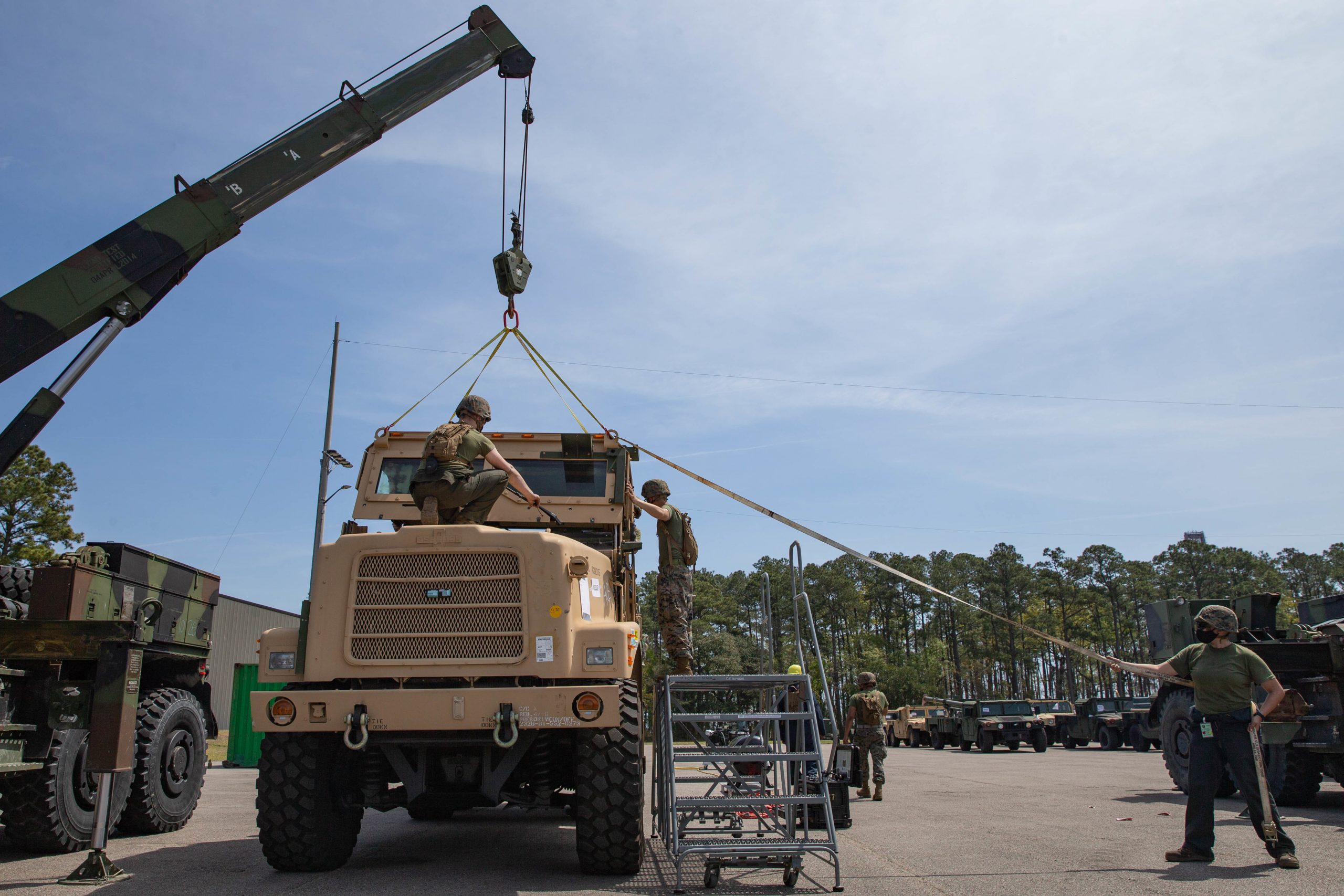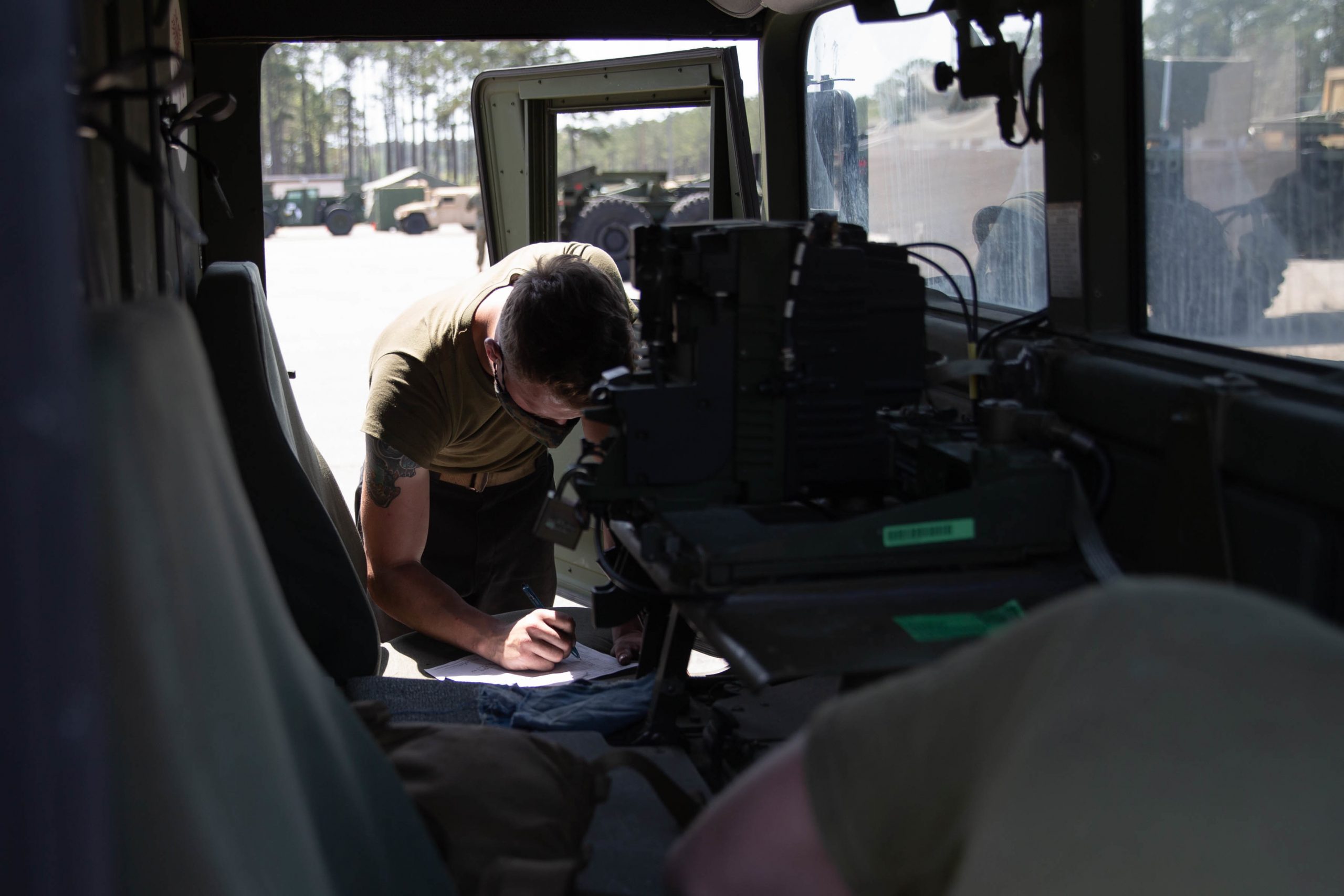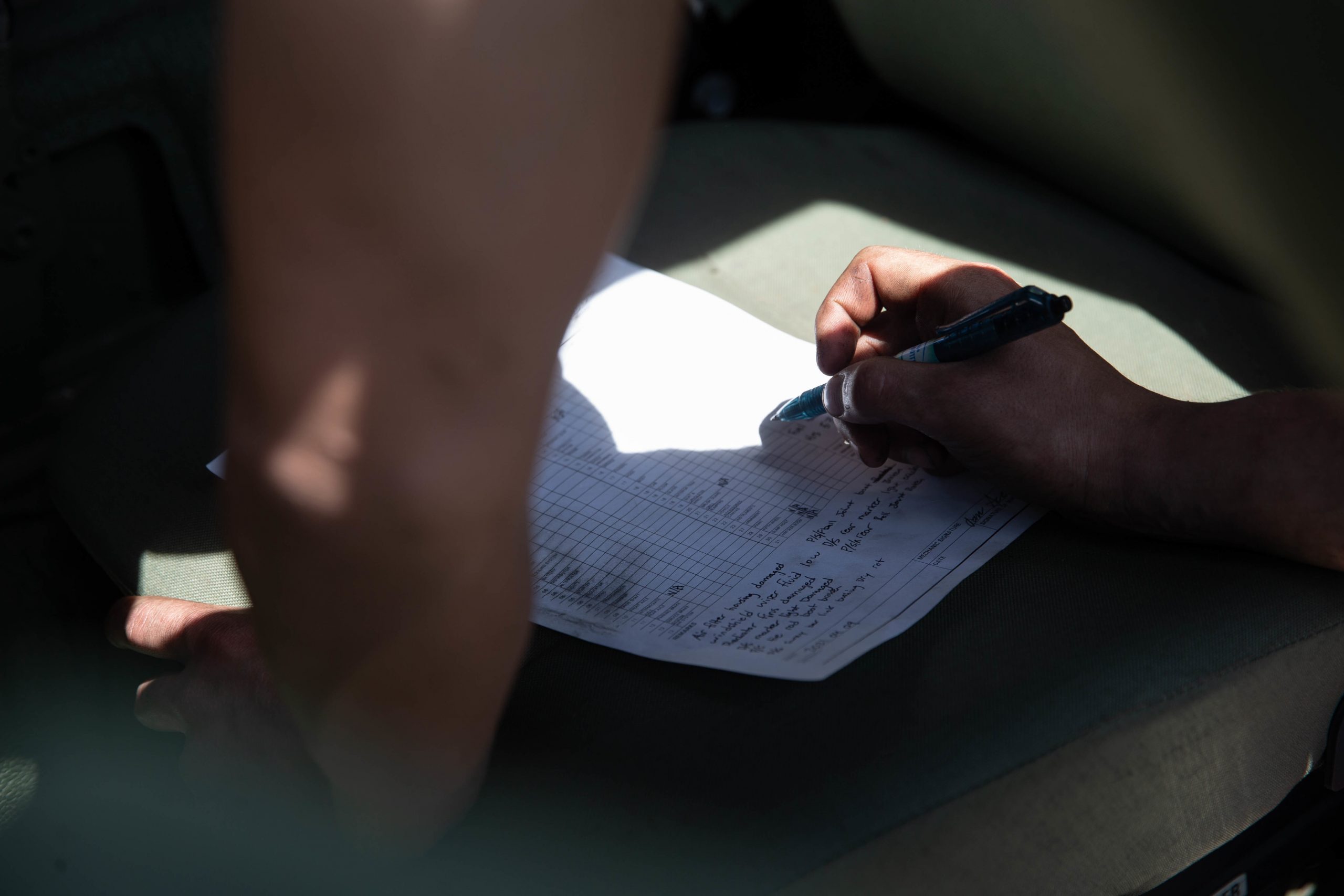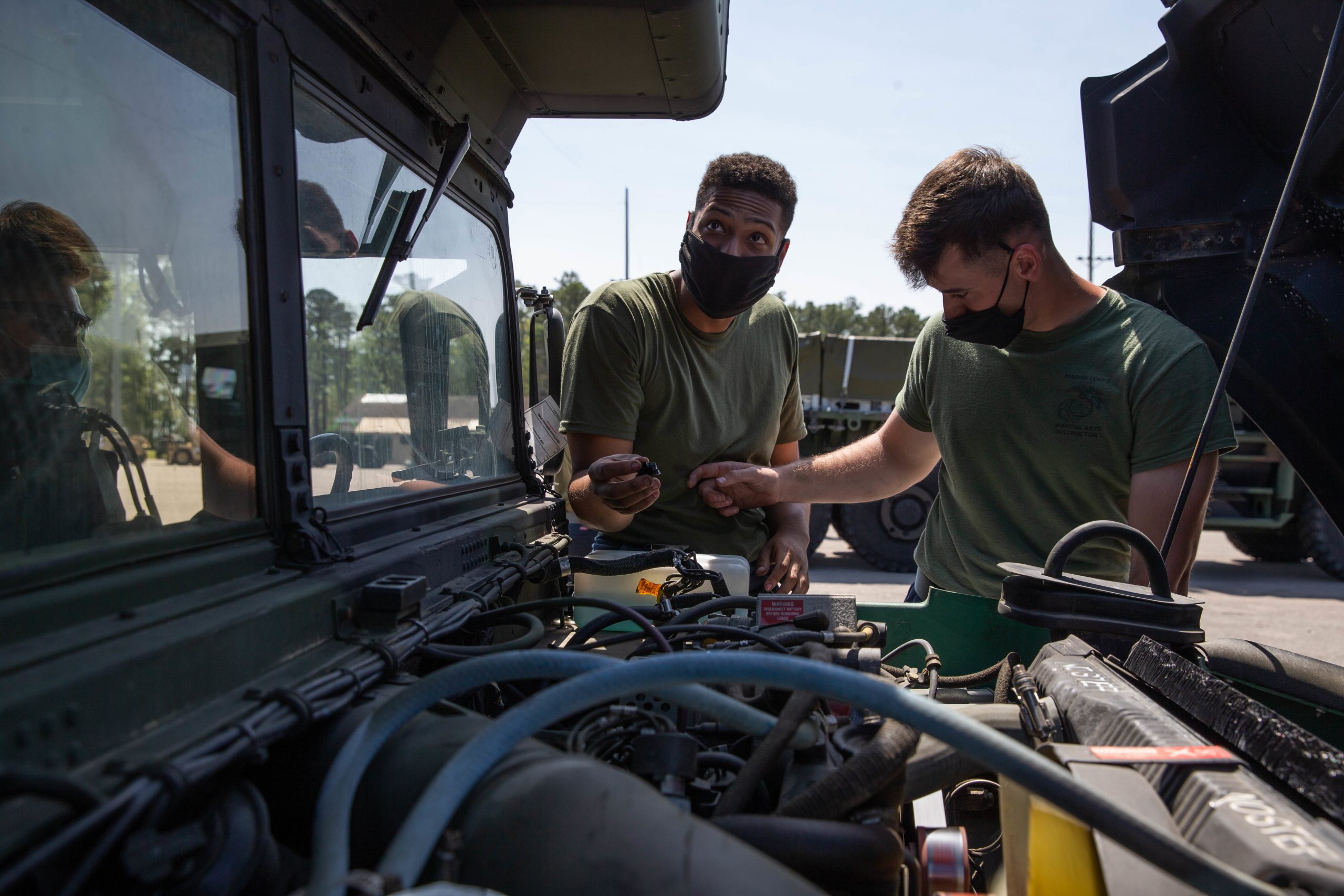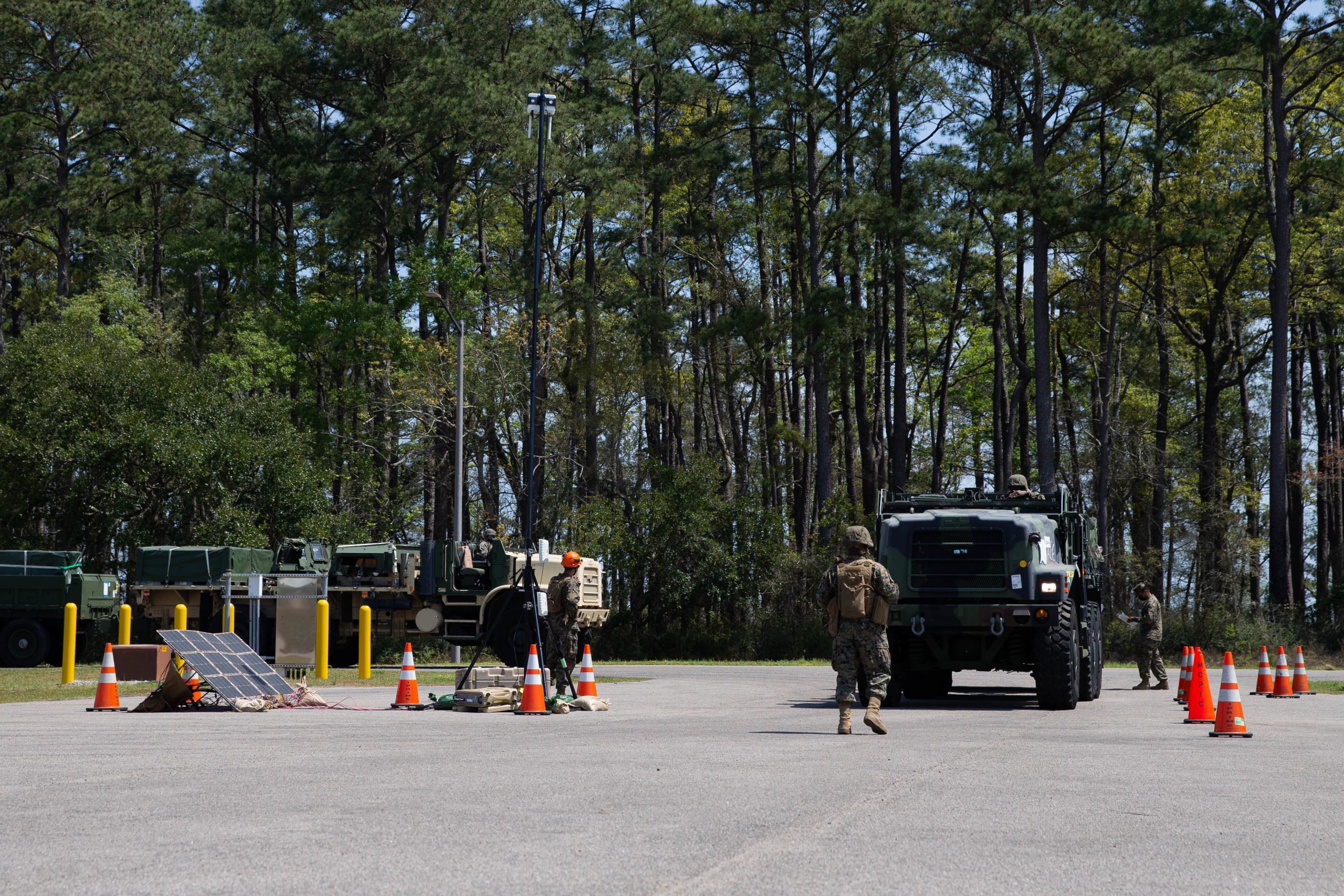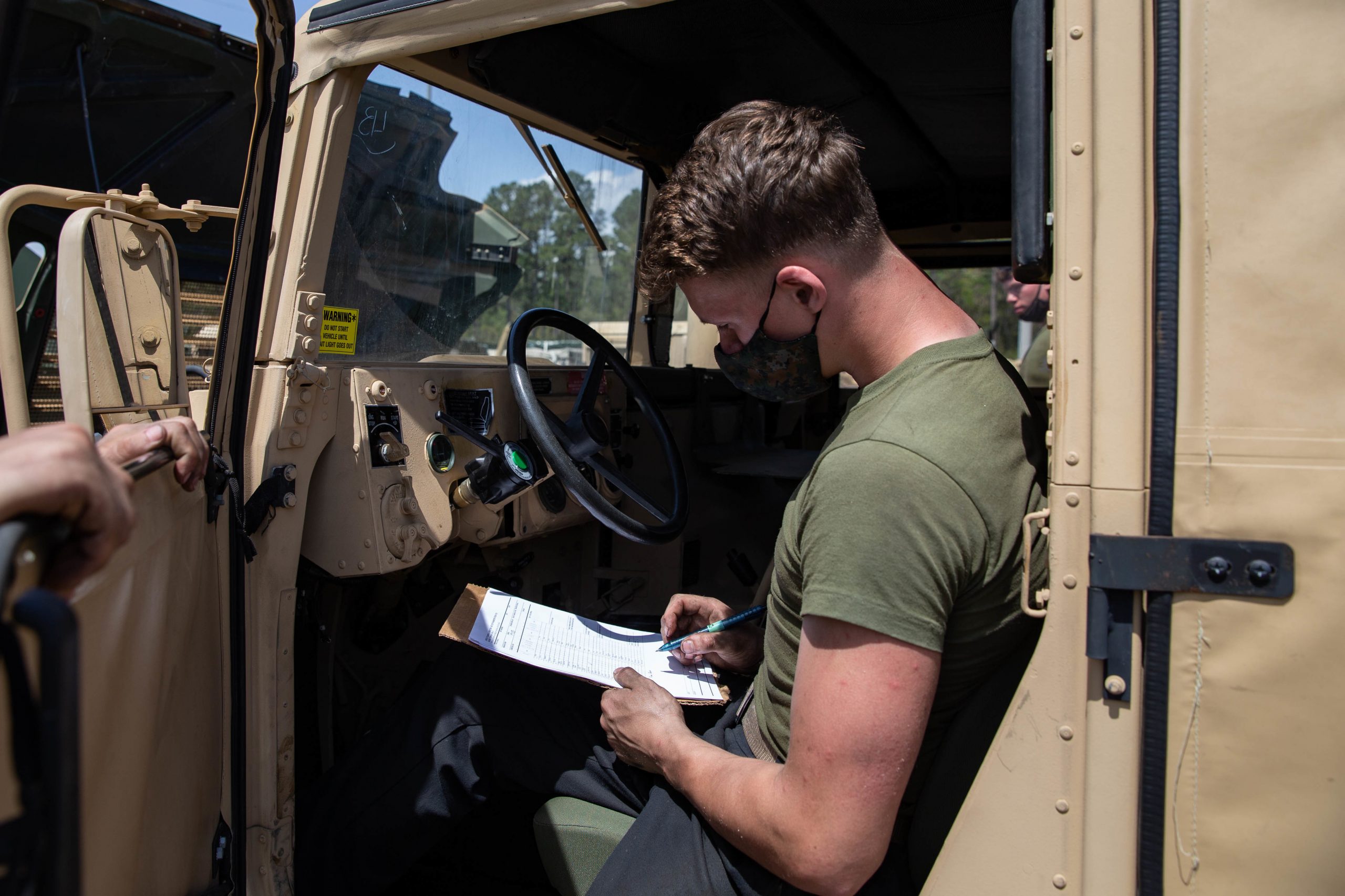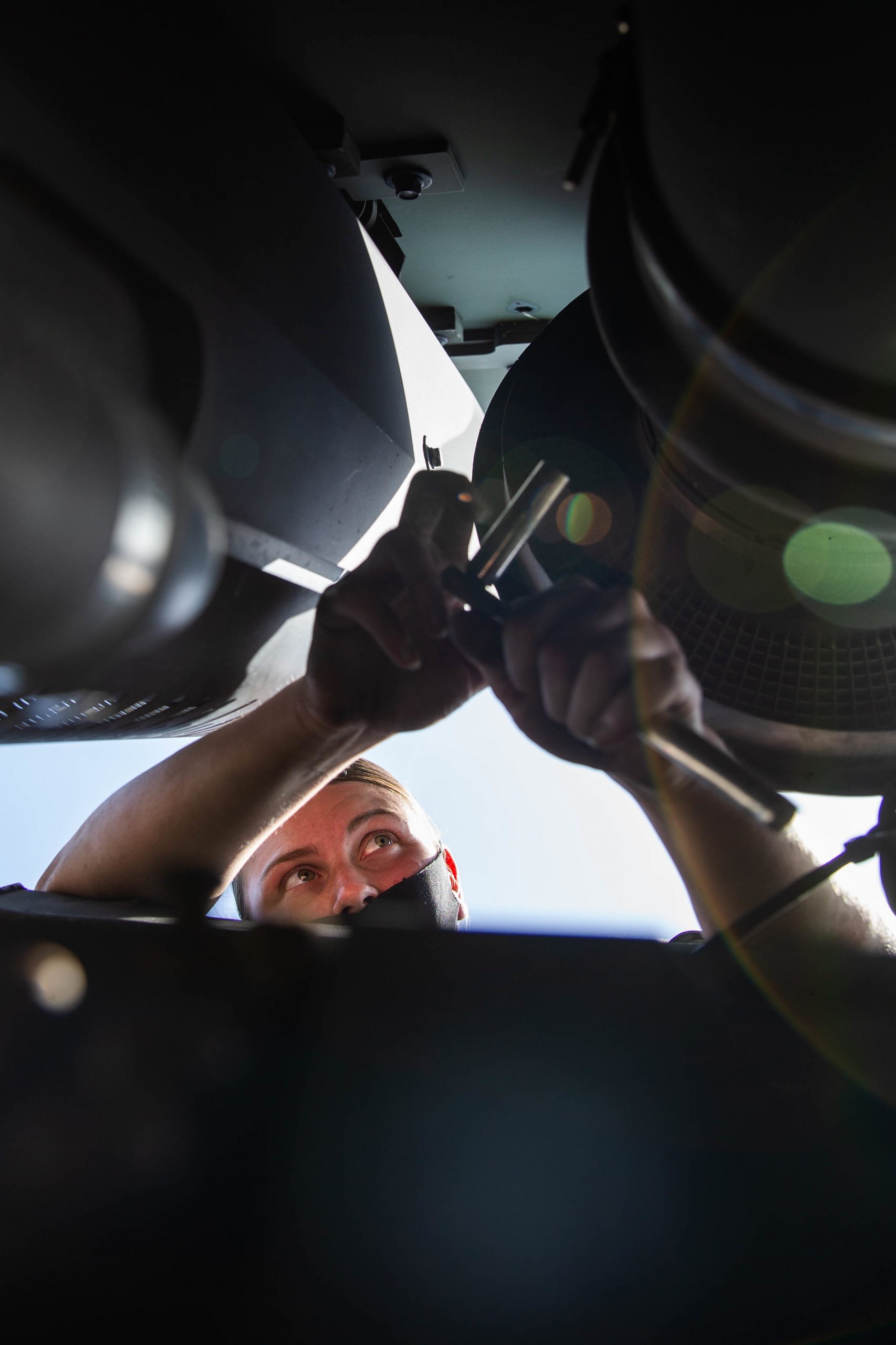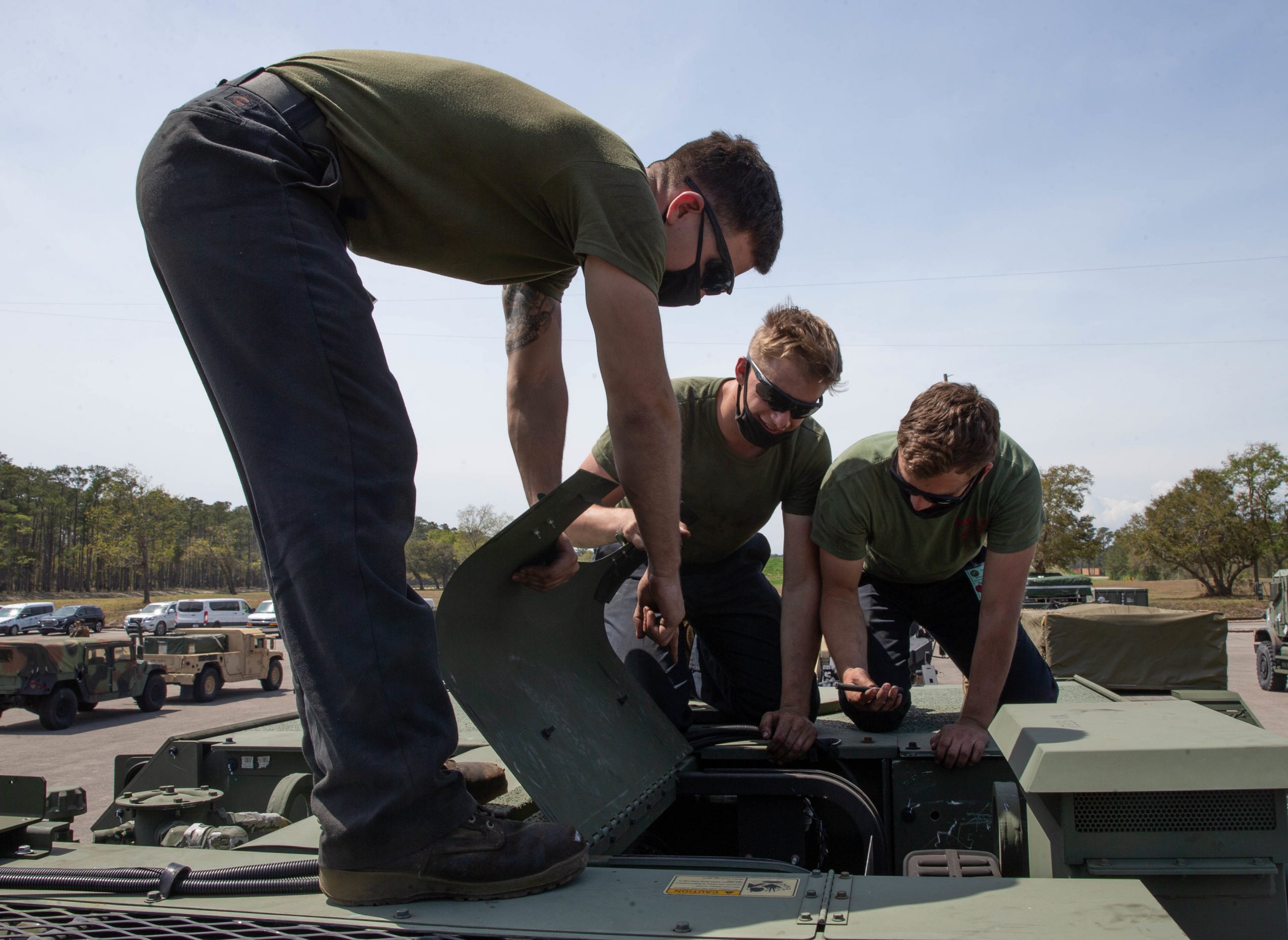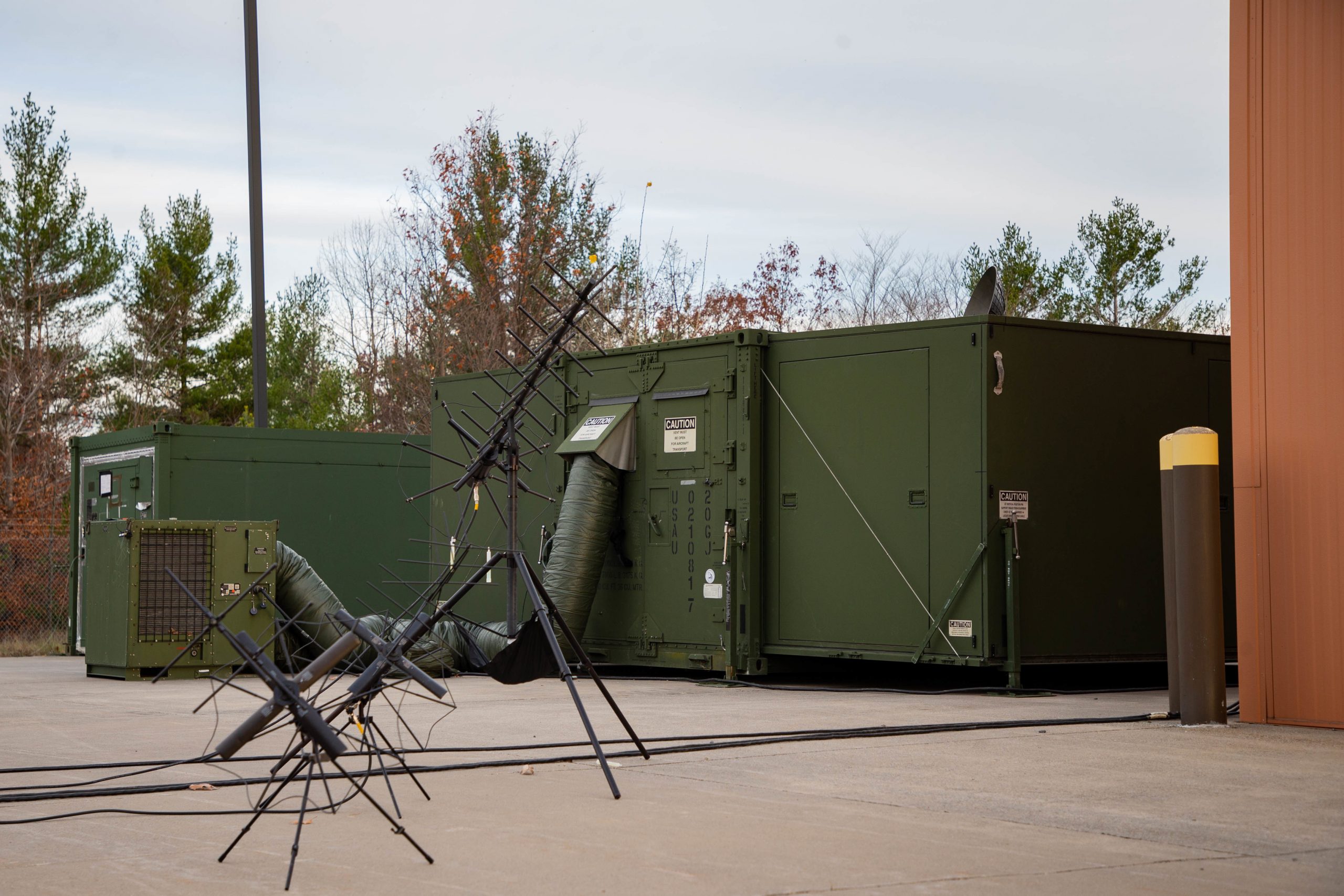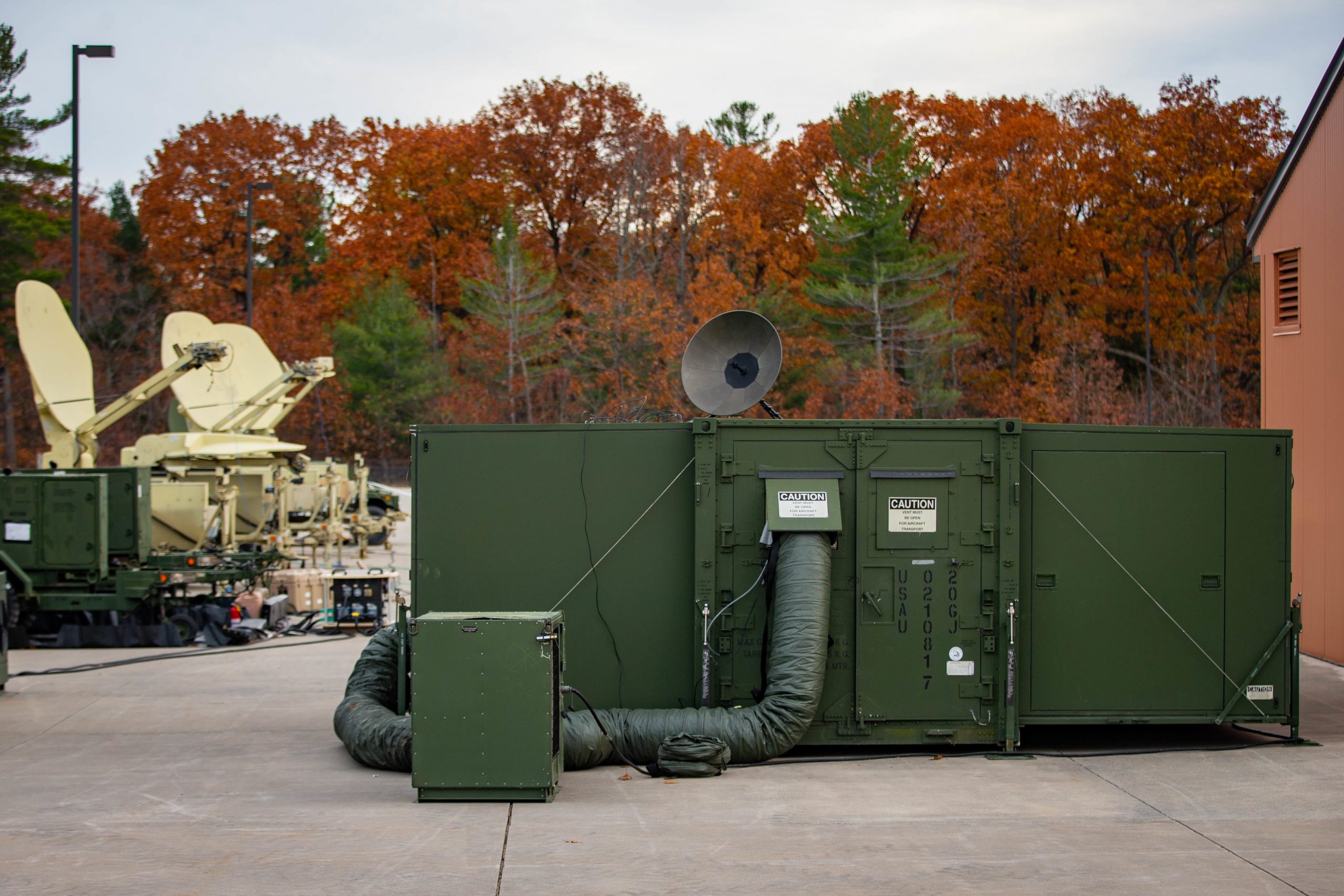By Robbin Laird
During a visit to Camp Lejeune during the last week of April 2021, I had a chance to talk and interview the IIMEF leadership team. They had just concluded a major exercise, Dynamic Cape 21, which I will highlight in some of those in the forthcoming published interviews.
Dynamic Cape 21 was a continuation of an exercise conducted last Fall, MEFEX 21.1. These exercises are part of the shift from the training for the land wars to the high-end fight, and one characterized by greater integration with the U.S. Navy. The logistics side of supporting such operations was highlighted in both exercises, but notably in Dynamic Cape 21.
As a prelude to the forthcoming published interviews, it is helpful to review what IIMEF said in their press releases about the two exercises.
Marine Expeditionary Force Exercise 21.1
In a story by Sgt. Elizabeth Gerber, II MEF, published on October 9, 2020, this is how the exercise was described as it began:
In the upcoming weeks, II Marine Expeditionary Force will be sending Marines and equipment to A. P. Hill, Virginia and Fort Drum, New York starting Oct. 7 for Marine Expeditionary Force Exercise 21.1.
MEFEX 21.1 is a command and control exercise conducted in a simulated deployed environment designed to enhance the interoperability and command and control between II MEF command element staff and its higher, adjacent, and subordinate command headquarters.
By conducting exercises of this nature, II MEF maintains its operational readiness, ready to provide the Marine Corps with an experienced staff capable of integrating with international allies and partner nations in a combined joint task force, charged with accomplishing a wide range of military operations at a moment’s notice.
According to Major Newman, Future Operations Planner for II MEF, “MEFEX was created to support the Commanding General’s Campaign Plan, aligning with USEUCOM and service planning guidance.”
“The Marines have been preparing for this exercise since Nov. 2019 by taking part in professional military education and other simulated exercises,” explained Newman. Approximately 1,200 Marines and sailors will be participating across the eastern United States.
II MEF is keeping the health and wellness of all participants a top priority throughout the execution of MEFEX 21.1. Leaders at all levels continue to emphasize the importance of social distancing, handwashing, surface sanitation, and proper mask wear in order to mitigate the spread of COVID-19. II MEF’s staff is constantly monitoring and assessing the situation and are prepared to take measured actions to protect the health of our Marines and sailors.
II MEF will train to fight and win in a command and control contested environment, exercise naval warfighting in a joint and combined environment, and incorporate experimental focus areas.
In a story by 2nd Lt. Eric Bohnenkamp, II Marine Expeditionary Force published on November 18, 2020, this is how the exercise was described as it concluded:
II MEF concluded Marine Expeditionary Force Exercise 21.1, which took place across the east coast at Fort Drum, New York; Fort A.P. Hill, Virginia; and Camp Lejeune, North Carolina, November 13.
The exercise occurred from November 4-13 and included Marines and Sailors with II MEF training alongside NATO allies: Norway’s Brigade North, French Army 6th Light Armoured Brigade, and the United Kingdom’s Royal Marine 3rd Commando, and U.S. Navy partners with Second Fleet.
II Marine Expeditionary Support Battalion provided and coordinated combat service support and administrative, training, and logistical support to the MEF Command Element during MEFEX 21.1. Additionally, II MSB served as the camp commandant for all tenants at Fort A.P. Hill, Virginia, and provided life support to a nearly 1000-person camp.
“We have a diverse group of talented Marines and Sailors across II MSB,” said Lt. Col. Robert Fairley, commanding officer, II MSB.
“Exercises such as MEFEX 21.1 provide our battalion with unique opportunities to come together and position ourselves to best support the MEF Command Element in a deployed environment.” Lt. Col. Robert Fairley, II MSB commanding officer
MEFEX 21.1 enhanced command and control and interoperability with allies and partners, focused upon facing a near-peer threat in the European theater and synchronized II MEF with its subordinate commands from 2nd Marine Aircraft Wing, 2nd Marine Division, 2nd Marine Logistics Group, and II Marine Expeditionary Force Information Group.
“This peer level exercise is focused upon a peer-level adversary where II MEF is dependent upon working with our allies and fleet partners,” said Lt. Gen. Brian D. Beaudreault, commanding general, II MEF. “This is very much a joint-combined exercise against a near-peer threat.”
The training objectives reached in the scenario were also matched by real-world accomplishments. Marines with Combat Logistics Regiment 27 drove 916 miles from Fort Drum, New York, to Camp Lejeune, North Carolina in only two-and-a-half days. CLR 27 is awaiting word from the USMC Historical Division concerning whether it was the longest the vehicle convoy in recent Marine Corps history.
The key objective of MEFEX was to find ways to tighten our integration with the allies and partners. “That was woven into this exercise in addition to tightening up the relationship with key allies and really subset of our NATO allies who are most likely matched with the capability with the Marine Corps,” said Beaudreault.
Dynamic Cape 21
It started with a major logistics effort within the exercise.
As as II MEF story highlighted the focus of the exercise in a piece published on April 15, 2021:
U.S. Marines with II Marine Expeditionary Force began Dynamic Cape 21.1, a live maritime prepositioning exercise that includes an Operational Logistics Exercise with a subsequent final exercise event, taking place from Apr. 7-28, 2021.
As a part of DC 21.1, 2d Marine Expeditionary Brigade, II MEF, and Combat Logistics Regiment 2, 2nd Marine Logistics Group, are participating in an OPLOGEX taking place across the eastern United States.
Locations hosting the exercise include Camp Lejeune, North Carolina; Military Ocean Terminal Sunny Point, Wilmington, North Carolina; and Blount Island, Florida.
During the OPLOGEX, U.S. Navy and Marine Corps forces will transport materiel and equipment on rail and ship and conduct pier-side offload of the USNS Williams at Blount Island Command, Florida. II MEF will also maintain an element in Camp Lejeune, North Carolina to command and control the offload while rehearsing the command’s ability to deploy, employ, and redeploy a forward element.
This exercise facilitates the rapid deploy-ability of scalable naval expeditionary forces in support of major combat operations. Marines and sailors train to increase critical expeditionary capabilities and facilitate bridging the seam between operations on land and sea.
U.S. Marine Corps Col. David R. Everly, the commanding officer of 2d MEB, said units are prepared to coordinate and respond to any situation when it comes to logistics.
“They’re ready to respond to any crisis,” he said. “An exercise like this is just another opportunity for us to show that we have a focus on all different spectrum of challenges that are hitting us, and we’re ready to respond.”
The OPLOGEX provides an opportunity for II MEF to develop, refine, and test portions of theater opening and force deployment processes to gain MEF-level warfighting proficiency and readiness.
And as the exercise concluded, Sgt. Elizabeth Gerber, II MEF, provided this assessment in an article published on April 30, 2021:
II Marine Expeditionary Force (MEF) executed Exercise Dynamic Cape (DC) 21.1, a live maritime prepositioning exercise that included an Operational Logistics Exercise (OPLOGEX) with a subsequent final exercise event, from April 7-28, 2021.
DC 21.1 was a MEF level exercise which supported the development of command and control and logistics capabilities across different areas of operations. The scenario-based training incorporated movement of military equipment, personnel, transportation, and cross communication between II MEF, its allies, and partners.
U.S. Marines assigned to II MEF, 2d Marine Expeditionary Brigade (MEB), and 2nd Marine Logistics Group (MLG) participated in DC 21.1 with external support from the Norwegian Army’s Brigade North.
During DC 21.1, the OPLOGEX took place across the Eastern United States including Marine Corps Base Camp Lejeune, Military Ocean Terminal Sunny Point, and Blount Island, Florida. The logistical exercise showcased the Marines’ ability to transport military equipment by rail, motor transport, and ship.
The OPLOGEX component of DC 21.1 was conducted by the recently activated 2nd Landing Support Battalion (LSB), 2nd MLG.
“This is our first major exercise since the activation of 2nd Landing Support Battalion,” said Lt. Col. Randall Nickel, commanding officer of 2nd LSB, “Marines of 2nd LSB were supporting the reconstitution of the equipment that was assigned to the MAGTF during exercise Dynamic Cape. The realistic quality of the exercise was apparent when put to the test.”
DC 21.1 has served as a crucial exercise for many components of the Marine Air-Ground Task Force (MAGTF) in refining and instilling combat readiness across many occupational fields.
“The processes that we established for Dynamic Cape 21 are exactly the same processes that we would use in a combat operation,” said Marine Corps Maj. William Hemme, the Arrival and Assemble Operations Group Supply Officer, “…as part of Dynamic Cape and the Operation Logistics Exercise, we have downloaded and we are reconstituting a single ship, the USNS D. T. Williams.”
Hemme stresses the importance of a realistic simulation for those who are responsible for the embarkation and disembarkation of equipment from one location to another.
“For this particular exercise, we intentionally set up so that we would have the most realistic training we could have with the supply processes implemented,” said Hemme.
Throughout DC 21.1, II MEF showcased command and control capabilities and achieved a major movement of personnel and equipment in a realistic training environment.
Without doubt, the exercises reflect testing out the transformation efforts from the intersection of the North Carolina-based Marines with 2nd and 6th Fleet with whom they work.
Clearly, this is a work in progress.
But the focus of the effort is clear which is highlighted in this USMC article which highlighted an April 7th meeting among the key commanders:
NORFOLK, Va. — U.S. 2nd Fleet (C2F) staff met with U.S. 6th Fleet (C6F) and II Marine Expeditionary Force (II MEF) staffs virtually to discuss best practices for maritime effectiveness, Apr. 7.
Opening remarks were led by Vice Adm. Andrew Lewis, commander, U.S. 2nd Fleet, Vice Adm. Gene Black, commander, U.S. 6th Fleet, and Lt. Gen. Brian Beaudreault, commander, II Marine Expeditionary Force.
The senior leaders focused on high-end training and employment, and the capability of supporting the employment of forces, whether on the Western side of the Atlantic, the Eastern side of the Atlantic, or in the Arctic. The tri-lateral engagement strengthens security and promotes freedom across critical sea lanes in the Atlantic.
“Synchronization with our counterparts at both II MEF and Sixth Fleet is vital to seamless command and control across the vast Atlantic AOR,” said Lewis. “Whether American ships and Marines are ultimately deploying to the High North, the Eastern Med, or the Arabian Gulf, East Coast ships must first sail across the Atlantic and the relationship between our staffs is critical to success.”
The topics discussed among senior members of the respective fleet staffs included organizational structure, maritime operations center functionality, and naval integration.
“We have demonstrated our ability to operate alongside Second Fleet, integrating II MEF Marines at every step of our planning and operational execution, building our asymmetric advantage to defeat any maritime threat,” said Black. “When we operate together and with our NATO Allies, as one seamless force, we will achieve transatlantic maritime superiority.”
Discussions aimed to improve integration amongst the three commands to ensure a seamless trans-Atlantic bridge. The three commands are prepared to operate together in every domain, at all levels of warfare, from the tactical to the strategic, alongside NATO Allies and partners.
“II MEF is a maritime force inextricably linked to our Navy partners in Second and Sixth Fleets,” said Beaudreault. “Our continued discussions ensures our naval expeditionary team continues to leverage our collective capabilities and increase lethality across all domains.”
C2F exercises operational authorities over assigned ships, aircraft, and landing forces on the East Coast and the Atlantic.
C6F, headquartered in Naples, Italy, conducts the full spectrum of joint and naval operations, in concert with allied and interagency partners, in order to advance U.S. national interests and security and stability in Europe and Africa.
II MEF, headquartered in Camp Lejeune, North Carolina, deploys and is employed in support of commandant commander (CCDR) requirements for contingency response or major combat operations. Aligning with the 38th Commandant’s Planning Guidance, II MEF is continuing to grow its naval expeditionary force alongside C2F and C6F.


